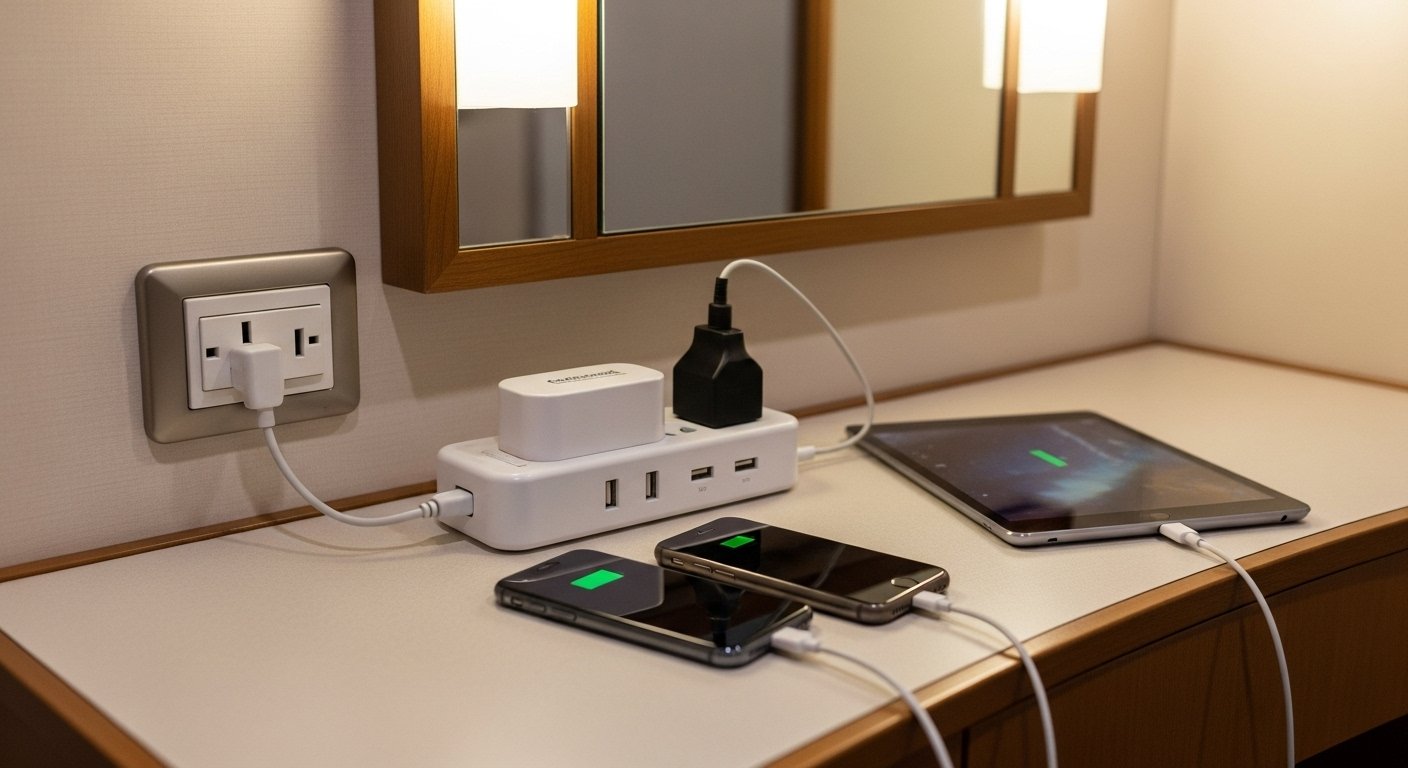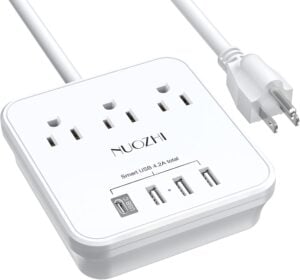Are Cruise-Approved Power Strips Really Necessary for a Family?
As the “Family C.E.O.,” you've meticulously planned the cruise, but now you're deep in the logistics of packing. You see “cruise-approved power strip” on a packing list and wonder, “Is this really necessary?” With four phones, two tablets, a camera battery, and maybe a gaming device, how will you manage with the one or two outlets in a standard cabin?
Let's solve this right now. Here is the expert answer on whether a cruise-approved power strip for family travel is just a gimmick or an absolute essential.
The Solution: Why Your Cabin Needs a Charging Hub
The Reality of the 1-Outlet Stateroom
First, let's confirm your fear: Yes, most standard cruise cabins have shockingly few outlets. Even on many modern Royal Caribbean or Norwegian ships, you will typically find one US-based 110V outlet and one European 220V outlet at the vanity. For a multi-generational family, this is a recipe for frustration.
It means constant juggling, arguments over whose device is at “critical” battery, and the “family photographer” discovering their camera is dead right before a big port day. For the Family C.E.O., it means one more thing to manage.
Why You Can't Just Pack Your Power Strip from Home
This is the most critical piece of information: You CANNOT bring a regular power strip from home.
All major cruise lines (Royal Caribbean, Carnival, MSC, Norwegian, etc.) explicitly ban power strips that have a surge protector. This isn't a suggestion; it's a major safety rule. A ship's electrical grid is a closed system, and surge protectors can interfere with it, creating a significant fire hazard.
If you pack one in your checked luggage, it will be flagged by security and confiscated. You will get a note in your cabin to retrieve it on the last day of the cruise. This leaves you back at square one, with one outlet and a frustrated family.
What Makes a Power Strip “Cruise-Approved”?
A “cruise-approved” or “cruise-safe” power strip is defined by what it lacks:
- NO Surge Protector: It must be a “non-surge” model.
- No Extension Cord (Preferred): While some short-cord models are allowed, the safest and most-accepted versions are compact units that plug directly into the wall.
These devices are not “protectors”; they are “expanders.” They simply and safely convert a single outlet into multiple charging hubs.
The Verdict: Is It Really Necessary for a Family?
As a Group Cruise Specialist, my answer is 100% yes. For a multi-generational family, a cruise-approved power strip is not a “nice-to-have”; it is an essential, stress-reducing tool.
It's the $10-20 investment that prevents a week of low-level arguments. It creates a central “charging station” so everyone knows where their devices are. It ensures the kids' tablets are charged for a quiet dinner, the teens' phones are ready for capturing memories, and your own phone is powered up to coordinate everyone.
This one small item solves a major, daily logistical headache.
What to Look For When Buying One:
- Must Have: The product description must explicitly state “Non-Surge” or “Cruise-Approved.”
- Smart Design: Look for a model that combines 2-3 standard AC outlets with 2-3 USB ports (USB-A and USB-C are a great combo).
- Compact Size: A small, wall-hugging block is much easier to pack than a long, corded strip.
- My Recommendation: This compact, non-surge power strip with USB ports is the exact type I recommend to all my family clients. It's small, compliant, and has the right mix of outlets.
Who Gets to Charge
Don't let your perfectly planned family vacation be derailed by the “who gets to charge” argument. Packing a small, cruise-approved power strip for family use is a C.E.O.-level move that solves a daily frustration before it even begins, ensuring everyone stays powered up and happy.
Now that your charging strategy is set, what other practical items make the perfect gift? For the complete overview of on-board essentials, countdown kits, and memory-makers, be sure to read our Ultimate ‘Family C.E.O.'s' Guide to Multi-Generational Cruise Gifts.
Join The Sunday Journey
Where family connection meets effortless coordination
Receive weekly inspiration, practical wisdom, and heartfelt stories about creating beautiful, seamless travel experiences for the whole family.
I respect your privacy. Unsubscribe at any time. Your information will never be shared.








